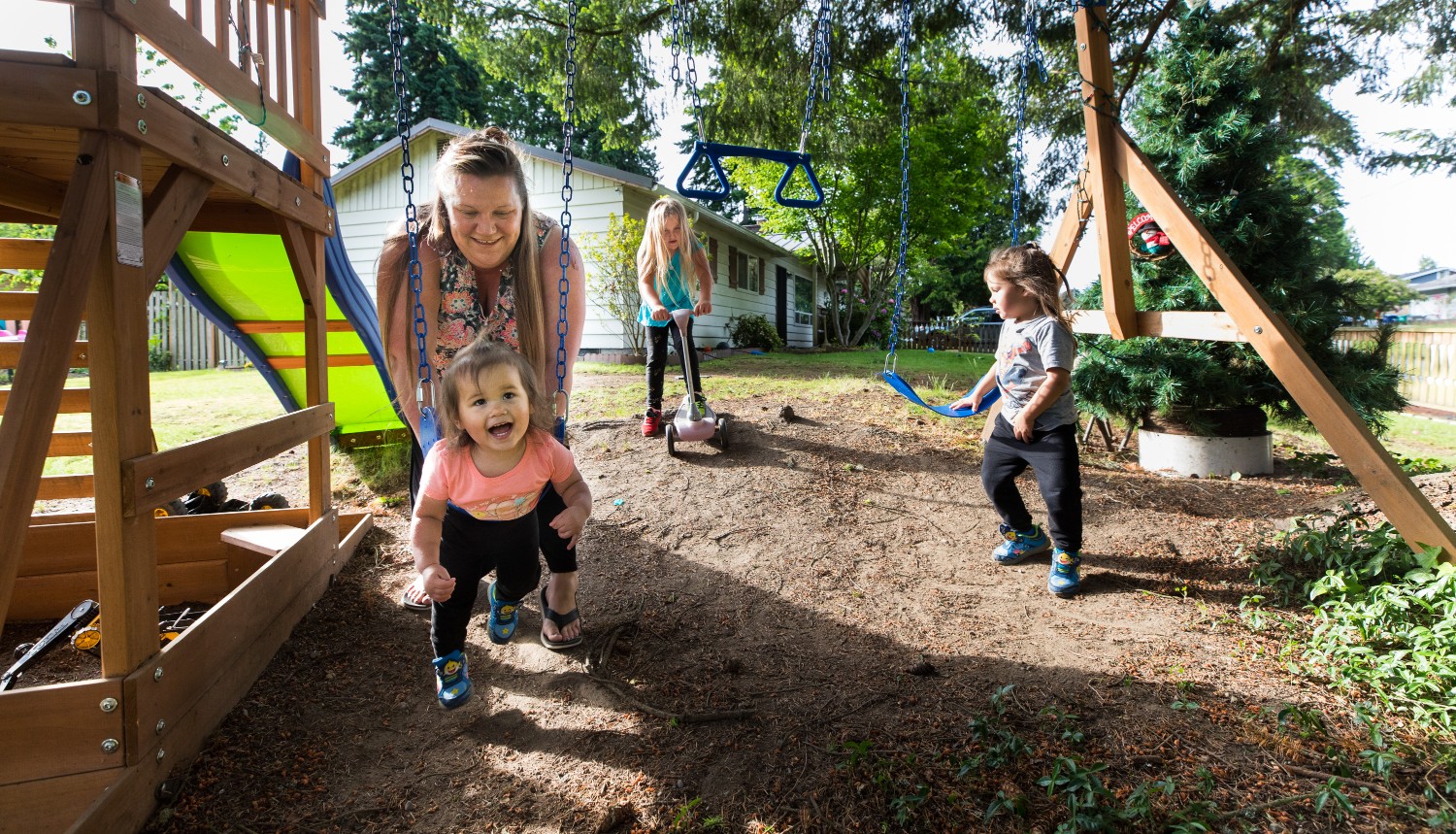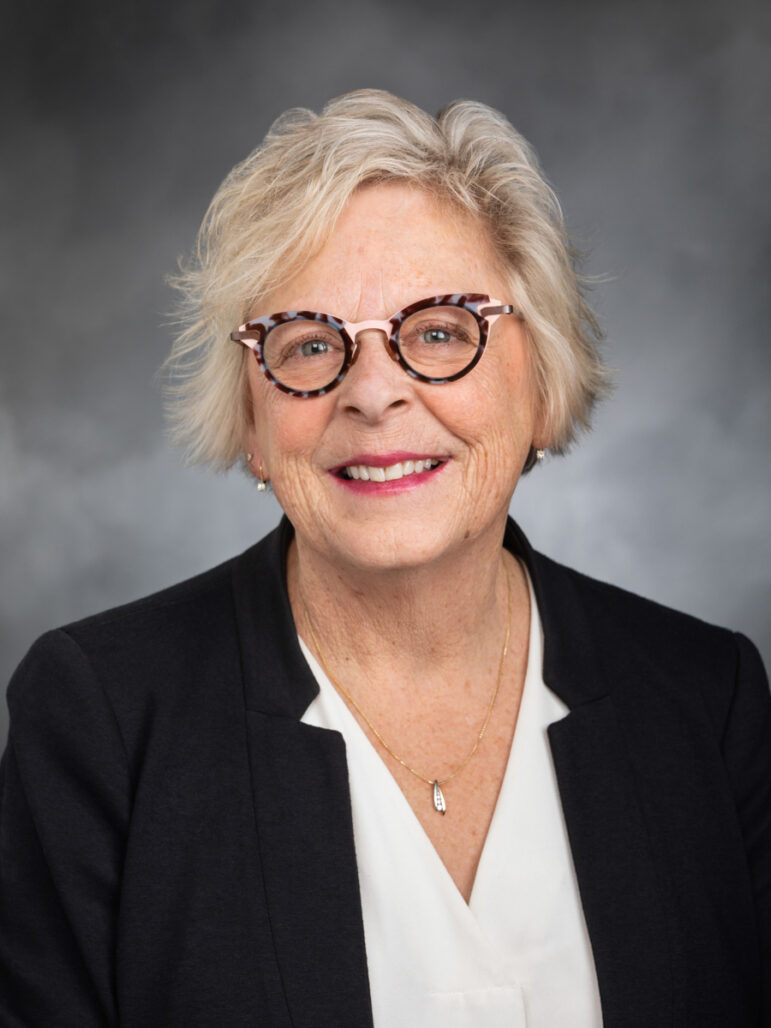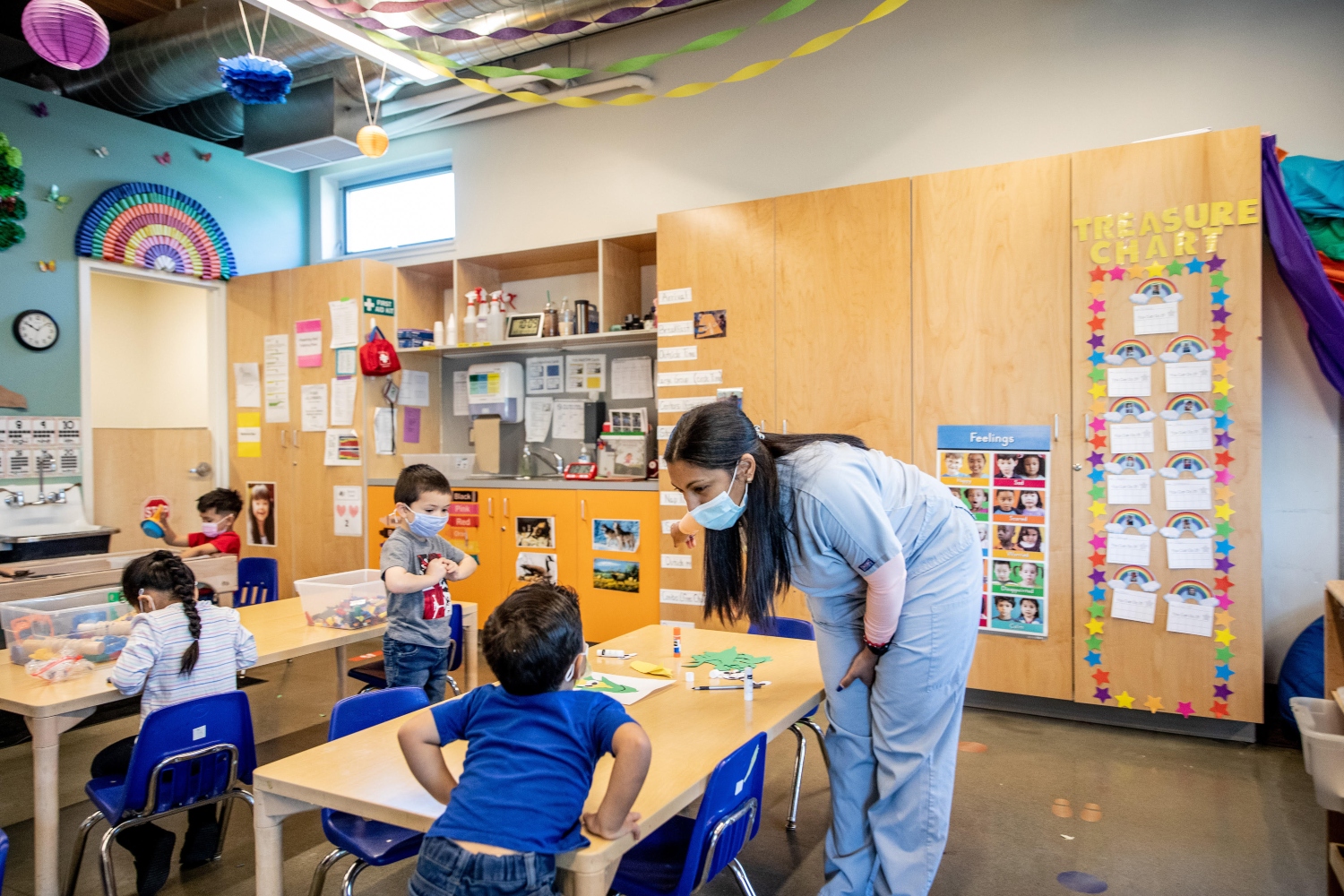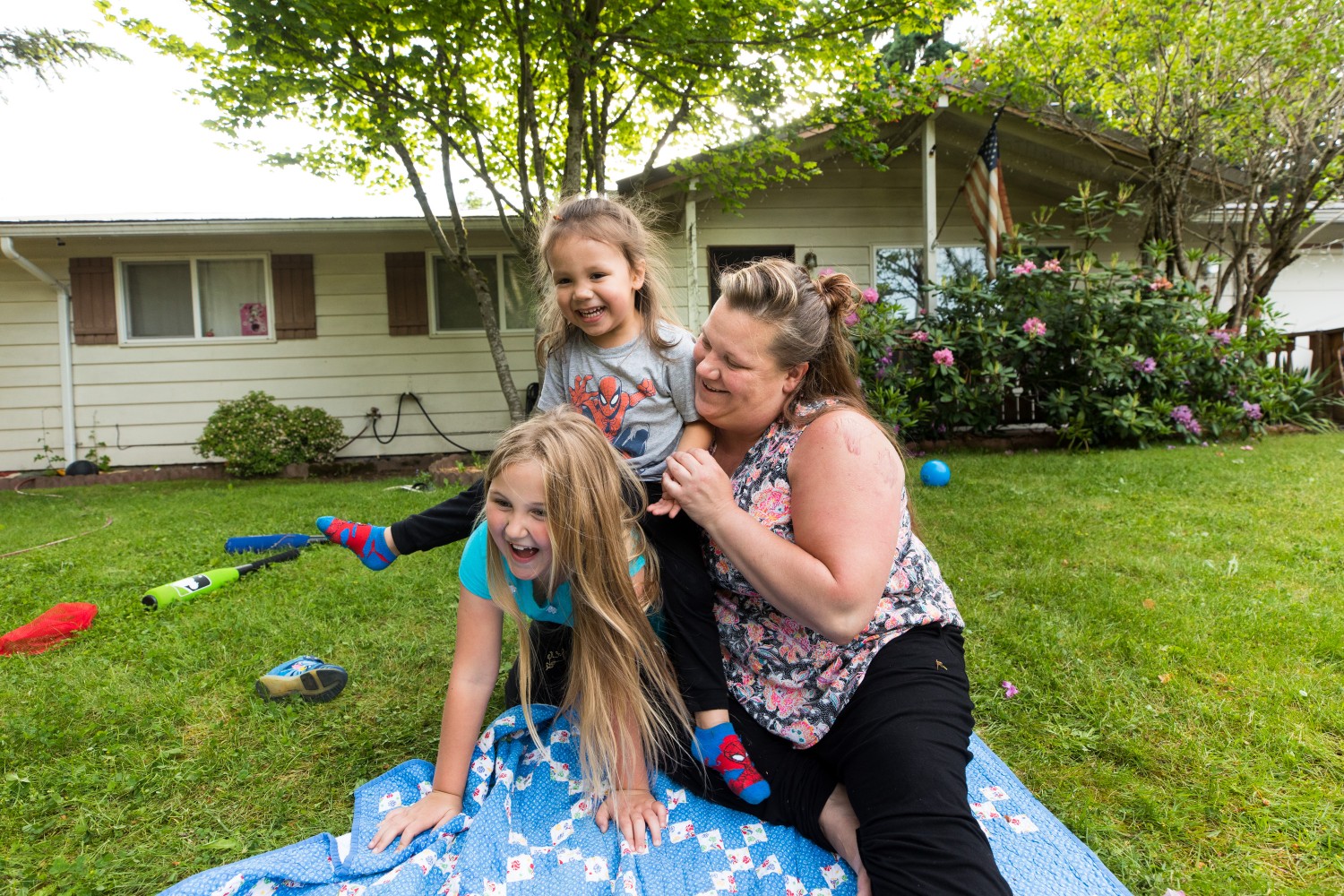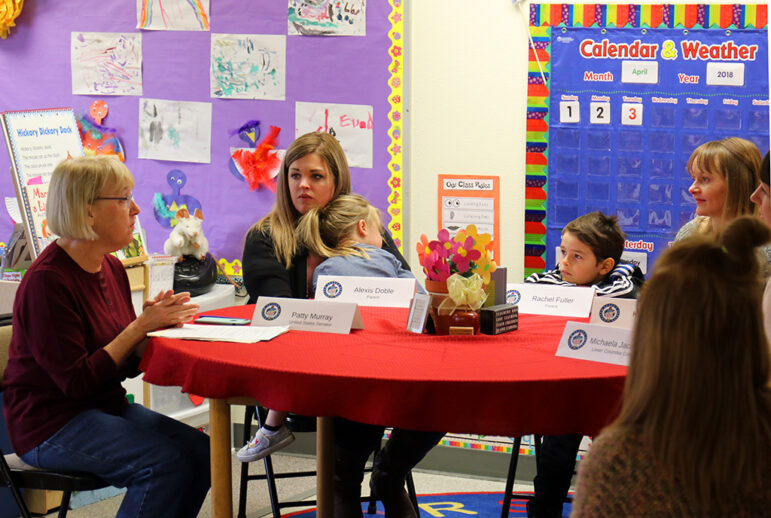Back in the spring, Jessica Heavner was feeling anxious. She had a new accounting job with the Federal Way school district and three kids she loved, but she didn’t love the math it took to combine those things.
The problem was child care and how to pay for it. Would the larger paycheck from the new job knock her out of eligibility for Washington state assistance with child care costs?
In September, Heavner found out for sure that when the state completes her annual review in January, she will be able to keep state assistance. Since July, when Washington state’s far-reaching Fair Start for Kids Act started phasing in, Heavner’s monthly child care copay has been $115 rather than $749. If she were to lose state assistance, child care costs for her three kids, now ages 2, 3 and 8, would have risen to about $2,900 per month during the school year, which would have made the new job a net money loser for her.
“The Fair Start for Kids Act has truly made an amazing difference in my life,” Heavner said. It’s allowed her to find good child care, do a job she loves and not have to fall back into a bad domestic situation just to get the bills paid.
But child care is still in crisis in Washington state, despite pandemic relief and historic state investments in 2021. It’s not a question so much of problems being ignored as much as it is continuing the push to find more funds and to strengthen support for a child care system that meets the needs of children, parents, the workers in it and the broader economy.
The national crisis continues as well, with President Joe Biden’s Build Back Better proposal blocked in the U.S. Senate by West Virginia Democrat Joe Manchin’s refusal to support it as written, apparently killing its chances of passage this month and possibly indefinitely. The bill, if passed in its current form, would have provided an estimated $1.6 billion to Washington state over three years for child care alone. It would make historic investments to enable states to offer universal preschool, as well as significantly expanding child care subsidies for kids ages birth to 5. Most families would spend no more than 7% of their household income on care for young children.
Signed into law by Washington Gov. Jay Inslee in May 2021, Fair Start primarily expands income eligibility for subsidized child care, lowers the copays for parents of kids ages birth to 12, and increases subsidy rates paid to providers who participate in Working Connections Child Care and ECEAP (state-funded preschool).
Heavner’s state senator, Auburn Democrat Claire Wilson, sponsored Fair Start. Even that program, Wilson said, leaves many needs unmet, from care for school-age kids to subsidies for care while adults look for jobs.
Experts and families say more attention is still needed for several overlooked groups:
- Care options for children with disabilities are sorely lacking. Fair Start could help with grants and rate enhancements to providers who serve them. Special training for child care workers and lower teacher-student ratios could go a long way toward accessible and inclusive care. Neither Fair Start nor the federal legislation addresses ratios.
- Much more programming is needed for those in the informal child care system — that is, the friends, neighbors and relatives who will remain so important, in part, because of the huge shortage of slots in affordable, licensed centers and homes, especially in rural areas.
- Most child care providers and experts say the key to stabilizing the industry is investing more in child care workers — much more than any private system can support, more than parents like Heavner could pay right now and more than can be saved by changing some regulations. The Build Back Better proposal would require improvements in worker pay.
An immigrant family takes on the child care system
The story of Nelsy Ortega and her family reads like a primer on child care, illustrating many of the challenges Washington is still dealing with. An immigrant and now a child care worker, Ortega and her husband have had struggles and triumphs in finding quality, affordable care and supporting their two sons, both of whom have disabilities.
Ortega moved from Venezuela to Yakima in 2016 with her husband and infant son, seeking political asylum. In Venezuela, Ortega had earned a bachelor’s degree in financial administration while working in a bank for 10 years. Her husband, Asdrubal Fuentes, graduated in information technology and worked for a technology service company. But in Yakima their limited English put them at a disadvantage for finding well-paid jobs. And they didn’t know anyone.
Eventually, the couple found full-time jobs in the apple orchards and packing plants, working up to 12 hours on some days, which meant they needed child care for their son. A new acquaintance recommended a neighbor who charged little — so without alternatives that they could afford, they decided to trust her. Still, leaving her son with a stranger felt like a dagger in her heart, said Ortega, who spoke to reporters in Spanish.
When her son was 2, Ortega began to worry about his speech development. She knew he had difficulty pronouncing words and thought he should have known more vocabulary for his age. After being brushed off by their pediatrician twice, she found a new pediatrician who referred them to La Villa de Los Niños / Children’s Village, a clinic that offers developmental screenings and therapy services. They confirmed Ortega’s suspicions of speech delays, started therapy services for him and helped write an individualized education program, or IEP.
“Thank God, really, we’ve met many good people who have helped us,” she said.
Ortega also wanted more socialization for her son but could not find a preschool they could afford. The couple made too much money to qualify for child care subsidies and couldn’t afford such care without help. They “earned just enough money to pay rent, some utilities and food,” Ortega said.
After her son had his diagnosis and an IEP, one of Ortega’s co-workers suggested she try to get him into Blossoms Early Learning Center, a state-funded Early Childhood Education and Assistance Program provider. Even though the couple earned too much to receive free preschool based solely on income, the ECEAP programs are required to consider children with IEPs, using a point system. The IEP is like a doctor’s note, to help children receive educational services starting at age 3. Ortega had no idea that a disability diagnosis would help secure a free spot for her son in preschool.
Soon after her son started at Blossoms, Ortega talked about her personal and family goals with the family advocate, whose services are provided as part of ECEAP. The advocate asked if she wanted to apply to Blossoms as a floater — an entry-level job filling in for teachers when they are sick or on breaks.
“I said, of course, yes!” Ortega recalled. It certainly wasn’t because the new job included a pay raise; it paid about the same as packing apples. It was because working such long hours in her old job had left her very little time with her son and husband.
Ortega had worried that her English skills weren’t good enough, but Blossoms needed staffers who could communicate with Latino children and their families in Spanish. However, to work in a licensed child care center, she would have to also start training in early childhood education, which she did in 2018.
Ortega was promoted to assistant teacher in 2020. She loves children. She said she feels more at ease (“mas relajada”) now because she can spend time with her family — unlike before when she would drop her son off at dawn and pick him up at night. Plus, she has a rare benefits package for a child care worker: comprehensive health benefits, life insurance and retirement.
Four years later, the same neighbor takes care of Ortega’s younger son, who is 2, and watches his older brother, now 6, before school.
When the couple’s younger son turns 3, he too will be able to attend Blossoms. He will also have an IEP. Born with microtia (an underdeveloped ear), he has speech problems and will likely experience hearing loss in the affected ear. He receives therapy for both.
“It isn’t easy” working full time, caring for her family and studying, Ortega said. In the mornings, she drops off the boys early at the neighbor’s house, goes to work, leaves work to take the older one to school, returns to work, then picks them both up after her shift. She also studies online. And Fuentes still works some long days in the fields and does some “industrial safety” chores — helping other workers with their safety equipment and tools.
While things are better now than during the months Ortega spent sleeping on an inflatable mattress and crying about the long, hard workdays away from her son, the budget is still very tight. She thinks their household income is about $58,000. With the boys constantly outgrowing clothes and shoes, and the typical problems with appliances or a car that needs repair, Ortega said, “In one way or another as parents we do our best. Sometimes we stop doing some things to be able to do others.”
Ortega was excited to hear in December (from InvestigateWest) about eligibility changes in Fair Start for Kids. They might even be eligible now for the Working Connections subsidy program with a monthly copay of $115.
Access to inclusive, full-time care for children with disabilities
The Ortega family’s story is unusual in a couple of ways: Both kids can attend an “inclusive” preschool program full time, where kids with and without disabilities learn together. And neither child had such serious disabilities that a neighbor couldn’t care for them.
Under the federal Individuals with Disabilities Education Act (IDEA), states are required to provide free education for children beginning at age 3, and are encouraged to provide early intervention services for infants and toddlers (all 50 states participate). The act provides funds to help make that possible. It also requires that education be provided in the “least restrictive environment” possible. Also known as inclusion or mainstreaming, this should put many kids with disabilities into the same classroom as typical kids.
Adrienne Stuart, public policy director for the Washington State Developmental Disabilities Council and a parent of children with disabilities, said she has experienced personally and heard from many others that children with developmental disabilities or delays are routinely discriminated against in trying to enroll in private and even public preschools on the basis of needing a toileting “accommodation.” A close second that she hears is the vague denial, “Your child just isn’t ready yet.”
In practice, especially in Washington state, many preschoolers with disabilities are in special classrooms, where most or all of their classmates have disabilities. Washington is one of the least inclusive states for children with disabilities.
As is true for child care in general, the problem of finding quality preschool for a child with a disability strikes middle-income families the hardest. They make too much money to easily qualify for an ECEAP slot, but not enough to afford one-on-one care. They face discrimination in trying to find slots with cash-strapped private providers and usually have inadequate resources and recourse to fight that discrimination. That doesn’t even factor in children without an IEP who still might need additional support to be successful. Or that most ECEAP slots do not cover a full workday of eight to 10 hours.
But the problems start even before preschool. Stuart said that parents of kids with disabilities quickly learn that the supportive services from birth to 3 years are extremely limited.
“So parents understand almost from day one that when your child has a developmental disability, you will need to drop out of the workforce to stay home to care for them. Because child care slots are barren for kids without disabilities, and for kids who do come from households of means,” Stuart said. “So you throw on a single mom who has a child with a developmental disability, that child has accommodation needs or additional support needs that need to happen in a day care setting, and you may as well go buy a lotto ticket.”
In Washington state, Fair Start for Kids funds more services for children with disabilities. One Complex Needs Fund created by the act will support inclusive environments for providers who care for kids with developmental delays, disabilities, behavioral and other unique needs.
But the Complex Needs Funds are not guaranteed to have money available. And Fair Start doesn’t lower the teacher-to-student ratio, which is critical to making inclusive education work, both for children with disabilities and those without, according to Stuart.
Ilene Schwartz, professor and director of the Haring Center for Inclusive Education at the University of Washington, said all children with disabilities need better support. The Haring Center operates the popular Experimental Education Unit inclusive preschool and kindergarten, conducts research, and trains teachers around the state.
“The reality is, there are not the services … in those early learning programs to support both the caregivers and the children to teach them the behaviors that they need,” she said. Rates of preschool expulsions decline dramatically when teachers have access to behavioral and mental health training.
Separate from Fair Start, a new Washington state rule will push public schools to place more children with disabilities in Head Start, ECEAP or private preschools. This means that more of the students who are already enrolled would be taught in nonsegregated classrooms, and possibly that more students with disabilities would enter preschool.
But Fair Start delayed ECEAP entitlement by four years, to the 2026-27 school year. So, even though many kids are now “eligible” for this state-funded preschool, and even more will be in the coming years, those slots are not available. ECEAP enrollment is currently capped at about 15,000 kids, with an estimated 21,000 children eligible but unserved by ECEAP or its federal equivalent, Head Start.
More help for traditional helpers
Even with Fair Start, and even if some version of Build Back Better passes in 2022, family members, friends and neighbors will remain a critical part of the child care system, especially for immigrants like Ortega and for Washington’s Native American families, families of color and low-income parents.
Family, friends and neighbors — or FFN, as those caregivers are called — are also important for parents working nonstandard or unpredictable hours. Many families prefer FFN providers for such reasons as trust, shared culture or language, one-on-one care for a child with a disability, and affordability.
Known as “license-exempt” in the policy world, these providers might be grandparents, the lady across the street or even an older sibling. An estimated 35,000 such individuals care for children in Washington. They are typically paid little or nothing, but they can get a modest $2.65 per hour subsidy if they care for children from qualifying families.
Under Fair Start, community organizations can continue to get funding for “play and learn” groups. These free groups meet weekly (in-person before the pandemic) to help children and FFN providers learn and socialize.
Sarah Brady, a policy and advocacy manager at Child Care Resources, a Washington nonprofit group supporting early childhood learning and care, said her organization will push for more state funding next year to add play and learn groups for FFN providers, along with more staff training and resources.
Keeping child care workers in the system
Karen Hart wants to see a child care system in Washington state that acknowledges the value of child care workers and makes them want to stay in the industry.
“If we had a gender equity system that was really based on what this job entails and how valuable it is to our society and the future of our society … we would have a system that people actually want to get into,” she said.
Hart is president of SEIU 925, a Washington state union that represents home-based and some FFN child care providers. She said the system must find a way to pay a largely female workforce based on their skills, education, experience and, in a pandemic, the health risks they take on daily.
Ortega is happy with her job, which pays about $30,000 per year. It certainly beats those long days of packing apples and barely seeing her kids. But she also agreed that child care workers should be better paid for the “great responsibility” they carry, especially in caring for children with special needs who need individualized support.
Fair Start for Kids punted the issue of worker pay down the road. Build Back Better, in its current form, would require that all child care workers receive what is deemed to be a living wage, on par with public school teachers who have the same level of education.
InvestigateWest has reported on the high cost of child care worker turnover elsewhere in this series. Higher pay for workers, better benefits and education, such as special training to support children with disabilities, are investments largely wasted if workers are constantly leaving. If the federal bill fails to pass, Washington state will have to find a lot more money to build up the child care workforce.
Finding more sources of money and maybe losing a key one
The list of groups and problems that Fair Start for Kids helps is long. For example, it funds more slots in child care deserts and pays for programs related to language and culture that are important for immigrants, Native Americans and other children of color. Those programs will be endangered if Washington state’s capital gains tax is overturned.
Losing that key funding source wouldn’t mean losing the core changes embodied in Fair Start. But some provisions — including the Complex Needs Funds and some inflation adjustments for providers — would have to go through the appropriations process, meaning they could be scrapped when budgets are tight.
The business community largely opposed the capital gains tax and other new taxes in the 2021 legislative session. However, there is hope in Washington state. Amy Anderson, government affairs director for the Association of Washington Business, said business leaders would support other methods of paying for Fair Start’s many initiatives. Discussions that include businesses, policymakers and child care experts would go a long way toward an agreement on funding, she said, possibly through new or increased taxes to supplement the general fund.
In Washington, D.C., hope is on hold as negotiations over Build Back Better extend into the new year. The U.S. Chamber of Commerce has launched ads against it, targeting moderate and vulnerable Democrats.
For child care advocates in Washington state, the possibility that it will fail is a huge blow. Ryan Pricco, director of policy and advocacy for Child Care Aware of Washington, said that people in the child care field have been working towards something transformational like Build Back Better for 50 years.
The legislation had “finally set the stage for us to treat child care for what it really is, what we now know it is — which is the most important part of a child’s education, the most important part of a young family launching their life together,” he said. If it fails, Washington state will have to redouble its efforts to support the child care workforce, the most important part of Build Back Better, Pricco said.
U.S. Sen. Patty Murray, a Democrat, has been working on child care and paid family and medical leave issues for about 30 years. She said that for parents who want to work, Build Back Better would remove the barrier that child care puts in their way. And the universal pre-K program, she said, “really addresses the significant issue of making sure that our kids are ready and capable of getting the best opportunities and learning that we can give them.”
Under this proposal, Heavner might pay nothing for child care. If that happens, she said, she would be able to apply for job promotions like the one she recently passed up, without worrying about losing eligibility for child care subsidies.
However, some of Build Back Better’s child care provisions have proven to be highly controversial. For example, disability rights advocates had supported a nondiscrimination provision that some religious organizations opposed. The Senate removed it, meaning church-run programs still wouldn’t be held to nondiscrimination laws.
If BBB passes, even without the nondiscrimination provision, Murray said, “For the first time, we’re actually going to recognize that families who have kids with disabilities or who have disabilities themselves are a key part of our economy — that we need them to be able to learn, to be educated, to be taken care of, and to have a job. … If we reach the full potential of all Americans, every one of us will do better.”
Build Back Better stipulates that states’ child care plans must make it a priority to deliver quality child care for children with disabilities, dual language learners and more. But states would be allowed considerable discretion in how they do that.
Ortega said she has learned how to better support her own children’s development and hopes to continue with her training. She might even try to work as an ECEAP family advocate, she said, “so I can help families like others helped me.”
Wilson, the state senator who worked for 25 years as an administrator in early education, said Washington state needs a stable revenue source to support better pay for child care work in order to attract and retain workers.
“We cannot have economic recovery without these investments,” she said. Combining different types and sources of funding will be critical. Even with Build Back Better, the state would have to take on a larger share of funding over time, and it’s not clear where the state would find the money.
“I go to bed at night thinking about child care funding,” she said, “because we don’t know how to do it yet.”
Caroline Guzman contributed to this report.
FEATURED IMAGE: Jessica Heavner with her children Alexia, 7, and Joseph, 3, at their home in Federal Way. (Dan DeLong/InvestigateWest)

